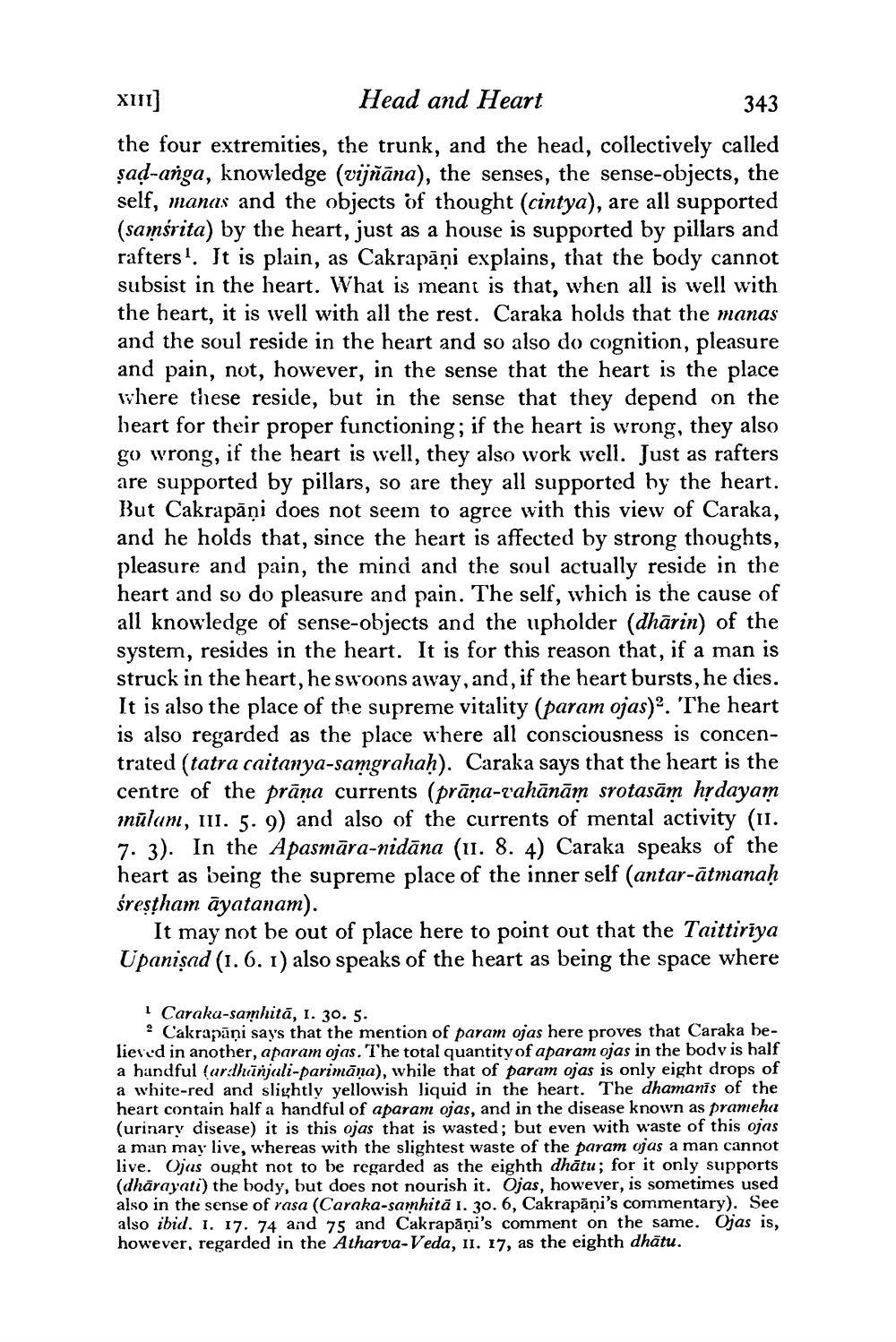________________
XIII]
Head and Heart
343
the four extremities, the trunk, and the head, collectively called sad-anga, knowledge (vijñāna), the senses, the sense-objects, the self, manas and the objects of thought (cintya), are all supported (samsrita) by the heart, just as a house is supported by pillars and rafters1. It is plain, as Cakrapāņi explains, that the body cannot subsist in the heart. What is meant is that, when all is well with the heart, it is well with all the rest. Caraka holds that the manas and the soul reside in the heart and so also do cognition, pleasure and pain, not, however, in the sense that the heart is the place where these reside, but in the sense that they depend on the heart for their proper functioning; if the heart is wrong, they also go wrong, if the heart is well, they also work well. Just as rafters are supported by pillars, so are they all supported by the heart. But Cakrapāņi does not seem to agree with this view of Caraka, and he holds that, since the heart is affected by strong thoughts, pleasure and pain, the mind and the soul actually reside in the heart and so do pleasure and pain. The self, which is the cause of all knowledge of sense-objects and the upholder (dharin) of the system, resides in the heart. It is for this reason that, if a man is struck in the heart, he swoons away, and, if the heart bursts, he dies. It is also the place of the supreme vitality (param ojas)2. The heart is also regarded as the place where all consciousness is concentrated (tatra caitanya-samgrahaḥ). Caraka says that the heart is the centre of the prāņṇa currents (prāṇa-vahānām srotasām hṛdayam mūlam, III. 5. 9) and also of the currents of mental activity (II. 7. 3). In the Apasmāra-nidana (11. 8. 4) Caraka speaks of the heart as being the supreme place of the inner self (antar-atmanaḥ śreṣṭham ayatanam).
It may not be out of place here to point out that the Taittiriya Upanisad (1. 6. 1) also speaks of the heart as being the space where
1 Caraka-samhita, 1. 30. 5.
2 Cakrapāņi says that the mention of param ojas here proves that Caraka believed in another, aparam ojas. The total quantity of aparam ojas in the body is half a handful (ardhānjali-parimāņa), while that of param ojas is only eight drops of a white-red and slightly yellowish liquid in the heart. The dhamanis of the heart contain half a handful of aparam ojas, and in the disease known as prameha (urinary disease) it is this ojas that is wasted; but even with waste of this ojas a man may live, whereas with the slightest waste of the param ojas a man cannot live. Ojas ought not to be regarded as the eighth dhatu; for it only supports (dharayati) the body, but does not nourish it. Ojas, however, is sometimes used also in the sense of rasa (Caraka-samhita 1. 30. 6, Cakrapani's commentary). See also ibid. 1. 17. 74 and 75 and Cakrapani's comment on the same. Ojas is, however, regarded in the Atharva-Veda, II. 17, as the eighth dhātu.




